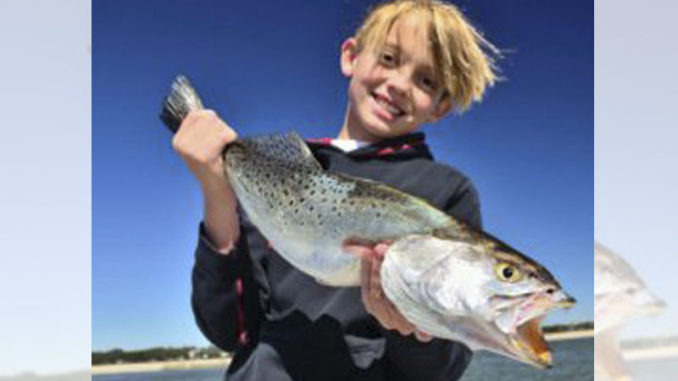
Abundance of food brings trout fishing in both Carolinas to the forefront this month. Here are some tips to get the most out of your fishing trips.
Summer is finally over and the fabulous fall fishing season is here. And while October brings on excellent chances to lure a big buck into range in the woods, a similar inshore coastal showdown shouldn’t be missed. Speckled trout are the prime targets in saltwater circles.
Specks make a living throughout the year in estuaries and coastal rivers. But fishermen in small, coastal communities know the best opportunity for a limit of trout is in the fall after the tourists have retreated from sand to their normal haunts. It’s when Ricky Kellum’s trout fishery in North Carolina’s coastal New River reaches a whole new level of fantastic.
“The New River is one of those spots where you can catch a limit of trout all year long,” said Kellum (910-330-2745), who runs Speckled Specialist Fishing Charters. “But a big group of fish always comes in every year around the month of October.”
For years, Kellum participated in a tagging study to track fish he’s caught in the New River estuary. According to tag return data, many of the fall arrivals come from northern locations, up to a state or two away. And many of the fish he tags in fall show up far to the north the next summer.
“We are catching fish in Sneads Ferry from the Chesapeake Bay and off the Virginia coast,” he said.
October can be easy for speck anglers when baitfish show up
Speckled trout move south as soon as the water temperature begins to drop. And they move into sounds and estuaries to feed, typically for Kellum, around a specific weather event in October.
“We will get a major push of fish right after a major front or nor’easter passes through,” he said. “I am not sure if they are staging along the beach or what. But when they arrive, your success rate goes through the roof.”
While the fall push of fish brings in large groups of fish, the speckled trout are here for one primary reason: the over-abundance of groceries.
“We will be covered up with shrimp, menhaden, and mullet in October. If the bait is here, the trout will be here. And if the bait is gone, so will the trout,” he said.
When the first major push of fish arrives, Kellum will target inlets and major ambush points off the big water because huge masses of bait from estuaries are moving in and out with the tide. Trout will set up along major ambush points along the main creeks and estuaries to gorge on the free food.
“During the summer, the trout are scattered around some. When the water cools down and the bait stacks up, the trout gang up and ambush bait as it comes by,” Kellum said. “I like to fish the edges of rips and whirlpools created at the inlets, large oyster beds, bridges and creek mouths with significant flow.”
Find ambush points
Kellum likes places where he can get out of the tidal current and cast along structure with a significant bottom change.
“I love oyster banks with deep ledges. It’s the perfect setup,” he said.
Kellum said he finds trout smashing baits from 3 to 4 feet deep to holes with more than 20 feet of water. However, most of the bait will be running shallow, trying to evade predators. And that make shorelines and ambush points excellent places to stake out.
They eat a variety of baits throughout the year. But when fall arrives, trout will be pounding on mullet and menhaden, which will be heading in and out of estuaries. Also, inshore populations of brown and pink shrimp will begin their move toward the ocean for the winter. And that makes the main runs and ambush points excellent places for trout to gorge on the available shrimp buffet.
The bite is fantastic along these main corridors early in the fall when water temperatures are making their initial drop. But when water temperatures start to fall towards seasonal lows as Christmas approaches, the bait has either retreated back to the ocean or upriver, away from the main channels and ambush points around inlet openings.
A variety of baits will work this month
“They start moving up the creeks as the water gets cooler looking for deep pockets,” Kellum said.
Bait and lure choices are wide open for Kellum, with an endless selection of live and artificial options worth a try. In certain areas where the bottom is rough and the water is deep, he will float live shrimp on an adjustable-depth rig, but anyone who knows Kellum’s reputation knows that artificial lures will always be his first choices.
Any type of lure that mimics a menhaden, mullet or shrimp will gain the attention of a fall speck. Kellum starts most days walking-the-dog with a topwater lure to break the early morning silence. Then, he will shift subsurface to a Betts Perfect Sinker artificial shrimp or his new favorite, a Betts Halo Shad.
“I love the Halo Shad. You can slow roll it across the bottom, and the fish will inhale it without having to do anything special. It’s my No. 1 winter bait over anything including the (artificial) shrimp,” he said.
Since trout are feeding so heavily on such a wide variety of foods, a wide variety of bait and lure options will produce good catches. Small twitch baits, suspending crankbaits, and jig/soft plastic combos will be successful along the coast of both Carolinas.

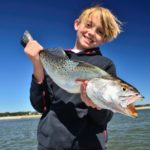
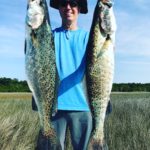
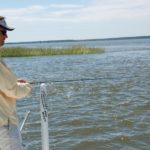
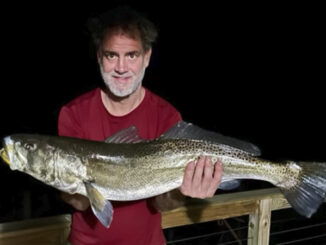

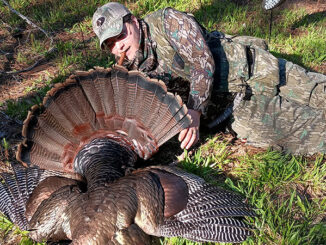

Be the first to comment